
Matamoros: A Hub of History and Coastal Charm
Explore Matamoros, a captivating city where history, culture, and coastal beauty come together to offer an unforgettable Mexican experience.
Matamoros, located in the northeastern part of Mexico, is a city that offers visitors a unique blend of historical landmarks, cultural richness, and coastal beauty. Known for its warm hospitality and vibrant traditions, this destination is perfect for those seeking an authentic Mexican experience. The city's rich history is evident in its well-preserved architecture and historic sites. A visit to the Cathedral of Our Lady of Refuge, a stunning example of neoclassical design, is a must. The Casamata Museum, housed in a former military fort, offers a fascinating glimpse into the region's past, showcasing artifacts and exhibits from different eras. Nature enthusiasts will find plenty to love in Matamoros as well. The city is situated near the Gulf of Mexico, providing easy access to beautiful beaches such as Playa Bagdad. Here, you can relax on the sandy shores, swim in the clear waters, or enjoy fresh seafood at local eateries. The nearby Laguna Madre, a coastal lagoon, is also a great spot for bird-watching and fishing. Matamoros is also renowned for its cultural festivals, including the Spring Festival and the Charro Days Fiesta, which celebrate the city's Mexican and Texan heritage. These events feature parades, traditional music, dance, and delicious food, offering visitors an immersive cultural experience.
Local tips in Matamoros
- Visit the Cathedral of Our Lady of Refuge early in the day to avoid crowds.
- Bring sunscreen and water if you plan to spend the day at Playa Bagdad beach.
- Try local seafood dishes at the coastal restaurants for a taste of fresh, authentic cuisine.
- Check the dates for local festivals like Charro Days Fiesta to enhance your visit with cultural events.
- Explore the Casamata Museum to understand the historical significance of Matamoros.
Matamoros: A Hub of History and Coastal Charm
Matamoros, located in the northeastern part of Mexico, is a city that offers visitors a unique blend of historical landmarks, cultural richness, and coastal beauty. Known for its warm hospitality and vibrant traditions, this destination is perfect for those seeking an authentic Mexican experience. The city's rich history is evident in its well-preserved architecture and historic sites. A visit to the Cathedral of Our Lady of Refuge, a stunning example of neoclassical design, is a must. The Casamata Museum, housed in a former military fort, offers a fascinating glimpse into the region's past, showcasing artifacts and exhibits from different eras. Nature enthusiasts will find plenty to love in Matamoros as well. The city is situated near the Gulf of Mexico, providing easy access to beautiful beaches such as Playa Bagdad. Here, you can relax on the sandy shores, swim in the clear waters, or enjoy fresh seafood at local eateries. The nearby Laguna Madre, a coastal lagoon, is also a great spot for bird-watching and fishing. Matamoros is also renowned for its cultural festivals, including the Spring Festival and the Charro Days Fiesta, which celebrate the city's Mexican and Texan heritage. These events feature parades, traditional music, dance, and delicious food, offering visitors an immersive cultural experience.
When is the best time to go to Matamoros?
Iconic landmarks you can’t miss
Periférico Park
Experience the beauty and tranquility of Periférico Park, a lush green haven in Heroica Matamoros perfect for relaxation and recreation.

Holiday Inn Matamoros, an IHG Hotel
Discover modern comfort and exceptional service at Holiday Inn Matamoros, your perfect base for exploring this vibrant Mexican city.

El Laguito and Park
Discover the calm beauty of El Laguito and Park, a natural retreat in Matamoros perfect for recreation, relaxation, and family fun.

Laguito de la 3
Discover the serene beauty and vibrant culture of Laguito de la 3, a stunning park in Matamoros perfect for relaxation and recreation.

Fort Casamata Museum
Discover the rich history and culture of Tamaulipas at Fort Casamata Museum in Heroica Matamoros, a fascinating destination for history enthusiasts and travelers.

Museum of Contemporary Art of Tamaulipas
Explore the vibrant contemporary art scene at the Museum of Contemporary Art in Tamaulipas, where creativity and culture unite in a transformative experience.
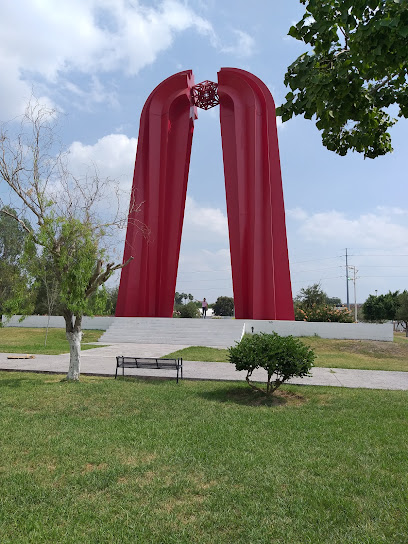
Rail Museum of Heroica Matamoros
Explore the Rail Museum of Heroica Matamoros, where Mexico's railway history comes to life through captivating exhibits and vintage locomotives.

Monumento A Rigo Tovar
Experience the vibrant cultural heritage at Monumento A Rigo Tovar, a tribute to the legendary Mexican musician in Matamoros, Tamaulipas.

Museo del Agrarismo Mexicano
Explore Mexico's agricultural legacy at Museo del Agrarismo Mexicano, a captivating museum in Heroica Matamoros showcasing the rich history of farming and agrarian culture.
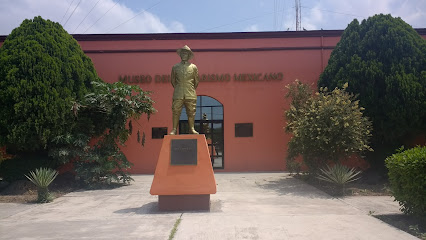
El Infiernito Grill
Experience authentic Mexican flavors at El Infiernito Grill, where delicious tacos and grilled specialties await in Heroica Matamoros.

Casa Cross
Explore the cultural tapestry of Matamoros at Casa Cross Museum, a must-visit destination for art and history enthusiasts.

Matamoros Park
Explore the natural beauty and serene environment of Matamoros Park, a perfect escape for relaxation and outdoor activities in Matamoros, Tamaulipas.

Rotonda De Los Matamorenses Ilustres
Explore Matamoros' cultural heritage at the Rotonda De Los Matamorenses Ilustres, a historical landmark celebrating the city's notable figures.

La Gran Puerta de Mexico
Explore La Gran Puerta de Mexico - a historical landmark that embodies the rich cultural heritage and architectural beauty of Matamoros, Tamaulipas.

MONUMENT TO THE MASTER
Discover the Monument to the Master in Matamoros, a historical landmark celebrating cultural heritage amidst a picturesque park setting.

Unmissable attractions to see
Olympic Park Culture and Knowledge
Explore the lush landscapes and cultural vibrancy of Olympic Park Culture and Knowledge in Heroica Matamoros, a serene retreat for travelers.

Parque La Rotonda
Discover the serene beauty of Parque La Rotonda in Heroica Matamoros, a lush urban park perfect for relaxation and cultural immersion.

SPI Excursions
Experience the thrill of water sports at SPI Excursions in South Padre Island, Texas, where adventure and relaxation meet the beautiful Gulf Coast.

Port Isabel Lighthouse State Historic Site
Discover the rich maritime history and stunning views at the Port Isabel Lighthouse State Historic Site in Texas.

Periférico Park
Discover the tranquility of Periférico Park in Matamoros, a lush green escape perfect for relaxation, picnics, and family fun amidst nature's beauty.

El Laguito and Park
Discover the serene beauty of El Laguito and Park in Matamoros, a perfect retreat for nature lovers and families alike.

Laguito de la 3
Discover the tranquil beauty and fun-filled activities at Laguito de la 3 in Matamoros, a perfect retreat for relaxation and adventure.

Isla Tours
Discover the stunning waters of South Padre Island with Isla Tours, your gateway to unforgettable boat adventures and marine experiences in Texas.

Fort Casamata Museum
Explore the captivating history of Matamoros at Fort Casamata Museum, a historical gem showcasing rich cultural heritage and fascinating exhibits.

Museum of Contemporary Art of Tamaulipas
Discover contemporary art at the Museum of Contemporary Art of Tamaulipas, a cultural gem in Heroica Matamoros showcasing local and international talent.

Sandcastle building on the beach
Unleash your creativity with sandcastle building on South Padre Island, a unique outdoor experience perfect for families and beach lovers alike.

Rail Museum of Heroica Matamoros
Discover the rich history of Mexico's railways at the Rail Museum of Heroica Matamoros, featuring vintage locomotives and engaging exhibits.

Monumento A Rigo Tovar
Discover the Monument to Rigo Tovar in Matamoros, a vibrant tribute to the cumbia legend and a cultural icon of Mexican music history.

Museo del Agrarismo Mexicano
Explore the rich agricultural heritage of Mexico at the Museo del Agrarismo Mexicano in Matamoros, where history and culture come to life.

Plaza Allende
Discover the serene beauty of Plaza Allende in Matamoros, a perfect park for relaxation and cultural experiences.

Essential places to dine
Bennigan's
Experience authentic American cuisine at Bennigan's in Matamoros – where every meal feels like home.

Mi Pueblito
Experience authentic Mexican cuisine at Mi Pueblito - where tradition meets flavor in Heroica Matamoros.

El Rincón de José Alfredo
Discover the vibrant flavors and authentic ambiance at El Rincón de José Alfredo in Heroica Matamoros - a must-visit for lovers of Mexican cuisine.

La Traviata Restaurante
Experience authentic Italian cuisine at La Traviata Restaurante in Heroica Matamoros – where every dish tells a delicious story.

Restaurante Bar García's
Discover authentic Mexican flavors at Restaurante Bar García's in Heroica Matamoros – a perfect blend of grill delights and local culture.

Chicago Italian
Experience authentic Italian cuisine with delicious pizzas and fast food at Chicago Italian in Matamoros - A culinary delight for all.

Carnes Asadas La Doce
Discover authentic Mexican cuisine at Carnes Asadas La Doce – a top-rated chophouse in Heroica Matamoros known for its delectable grilled meats.
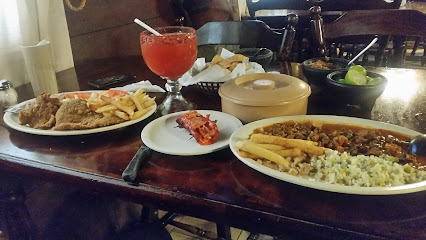
Cafetería Doña Paola
Experience authentic Mexican flavors at Cafetería Doña Paola in Heroica Matamoros – your go-to spot for breakfast and coffee.

Los Portales
Experience the essence of Mexico at Los Portales - where every meal is a celebration of flavor and tradition.
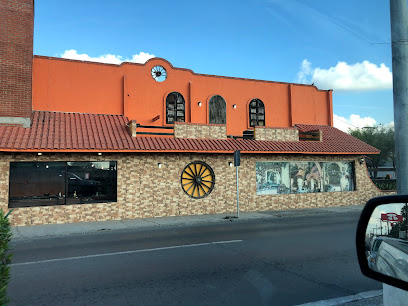
Restaurante y Bar Hogar
Experience authentic Mexican cuisine and vibrant bar vibes at Restaurante y Bar Hogar in Matamoros.

Fortín de Bravo
Experience authentic Mexican cuisine at Fortín de Bravo in Heroica Matamoros - where every dish tells a story.

Restaurante Santa Fe
Experience authentic Chinese and Asian cuisine at Restaurante Santa Fe in Matamoros – a culinary gem known for its delightful flavors and inviting ambiance.

La Lola
Experience authentic Mexican breakfasts at La Lola in Matamoros, where delicious flavors meet warm hospitality.
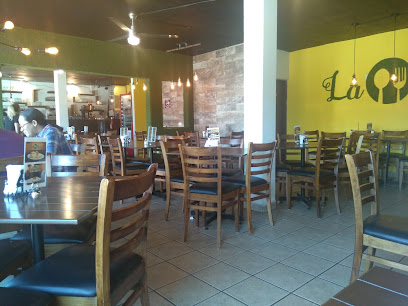
Toro Loko
Experience the best of American comfort food at Toro Loko in Matamoros – famous for its breakfasts and delectable hamburgers.
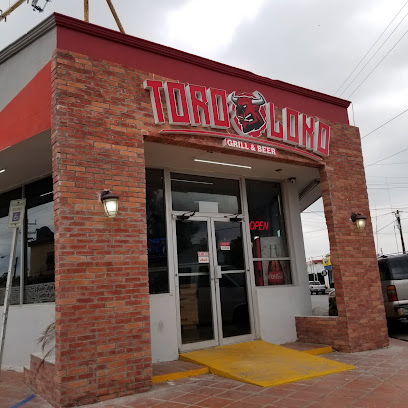
Restaurante Louisiana
Experience authentic Mexican cuisine at Restaurante Louisiana in Heroica Matamoros—where every meal is a celebration of flavor.

Markets, malls and hidden boutiques
Chedraui
Discover the vibrant Chedraui supermarket in Matamoros, a treasure trove of local goods, fresh produce, and everyday essentials.

Bodega de Tlapaleria y Ferreteria Rodriguez
Discover quality tools and local craftsmanship at Bodega de Tlapaleria y Ferreteria Rodriguez in Matamoros, a must-visit hardware destination.

Plaza División 75
Discover the essence of Matamoros at Plaza División 75, a vibrant shopping mall filled with retail, dining, and entertainment options for every visitor.

Casa Rodriguez Design Center
Explore exquisite tiles and design inspiration at Casa Rodriguez Design Center in Matamoros, the ultimate destination for tile enthusiasts.

DIHERESA
Explore DIHERESA in Matamoros for unparalleled tool repair services and quality hardware, perfect for all your DIY needs.

Dulceria LA PIÑATA
Explore the vibrant world of sweets at Dulceria LA PIÑATA, a delightful candy store in Heroica Matamoros, offering a variety of traditional and modern confections.

D´rosel
Discover sophisticated tuxedos and accessories at D'rosel, Matamoros' premier destination for formal wear.

Papeleria Genesis Matamoros
Explore Papeleria Genesis Matamoros for comprehensive stationery, educational supplies, and reliable computer repair in a friendly environment.

Creaciones Sivi
Explore a vibrant selection of costumes and dancewear at Creaciones Sivi, your go-to destination in Matamoros for all things creative and fun!

Librería Horus
Explore a treasure trove of literature at Librería Horus, the premier book store in Matamoros, where every book is a new adventure waiting to be discovered.

Casa Rodríguez Ferreteros Mayoristas S.A. de C.V.
Explore Casa Rodríguez, a premier hardware store in Matamoros, offering tools and supplies for every DIY enthusiast and professional alike.
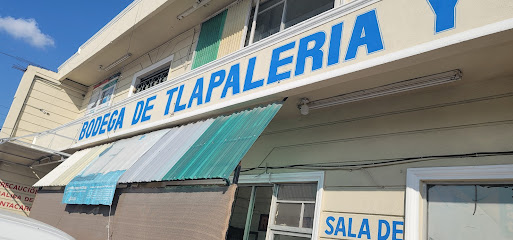
flores de mexico matamoros
Discover the vibrant floral artistry at Flores de Mexico in Matamoros, where every bouquet tells a story of local culture and beauty.
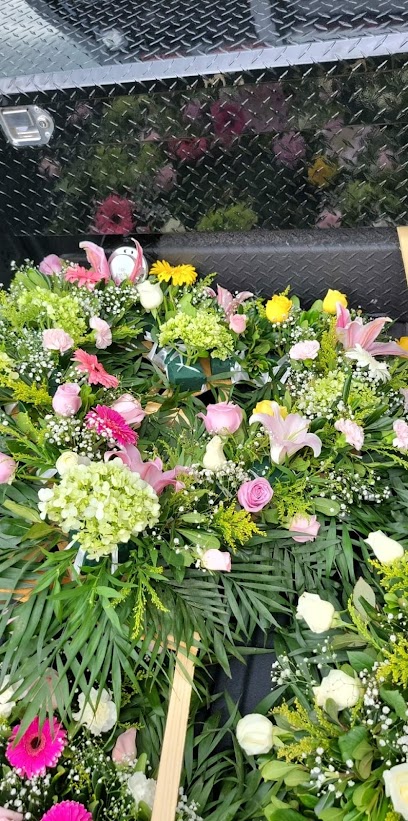
Puzzles Store Matamoros
Explore unique fashion accessories at Puzzles Store Matamoros, where style meets local charm in a delightful shopping experience.

Centro De Matamoros
Explore Centro De Matamoros: A vibrant shopping mall in Heroica Matamoros with local shops, dining, and entertainment, perfect for every traveler.

Juany's boutique
Explore Juany's Boutique in Matamoros for unique clothing and a taste of local fashion culture, perfect for every style-savvy traveler.

Essential bars & hidden hideouts
Restaurante Bar García's
Experience the heart of Mexican cuisine and culture at Restaurante Bar García's, where vibrant flavors and a lively atmosphere await every visitor.
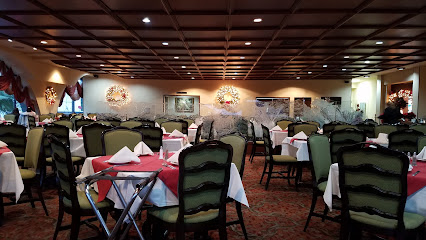
Perla Negra
Experience the vibrant flavors of Perla Negra, a grill in Heroica Matamoros offering delicious dishes and a lively atmosphere for the perfect dining experience.

EL ALAZAN
Experience the vibrant flavors of Mexico at El Alazan, Matamoros' premier grill restaurant offering exquisite dishes and a welcoming atmosphere.

45 grados resto bar
Discover the culinary delights at 45 Grados Resto Bar, a premier grill destination in Heroica Matamoros, offering mouthwatering dishes and a vibrant atmosphere.

El Granero Rest-Bar
Experience the vibrant flavors and lively atmosphere at El Granero Rest-Bar in Heroica Matamoros, where delicious food meets local culture.

Cantares Karaoke-Bar
Experience the vibrant nightlife of Matamoros at Cantares Karaoke-Bar, where every night is a celebration of music and camaraderie.

Charlie's Wings - Sports Bar
Experience the thrill of sports and the taste of delicious wings at Charlie's Wings, Matamoros' premier sports bar.

El Pre Resto Bar
Experience the lively nightlife at El Pre Resto Bar in Heroica Matamoros - a perfect blend of great drinks and vibrant atmosphere.

Draugai Bar
Discover the flavors of Heroica Matamoros at Draugai Bar, where grilling meets vibrant nightlife in a welcoming atmosphere.
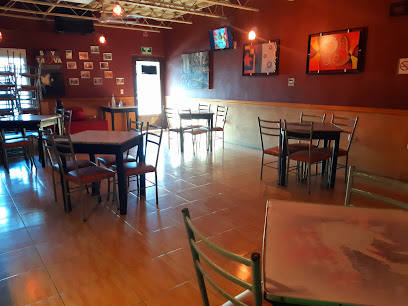
Santu Bar
Discover the vibrant nightlife and unique flavors at Santu Bar, a must-visit destination for an unforgettable experience in Heroica Matamoros.

La Chiquita Bar
Discover La Chiquita Bar in Matamoros – a lively bar offering delicious drinks and snacks in a vibrant atmosphere perfect for socializing.

Antro-Bar CRUSH CLUB
Discover the vibrant nightlife of Matamoros at Antro-Bar CRUSH CLUB, where great drinks and lively music create unforgettable memories.

11:11 Resto Bar
Discover the lively 11:11 Resto Bar in Heroica Matamoros—your go-to spot for delicious food, refreshing drinks, and unforgettable ambiance.

LA HEROICA RESTAURANTE
Discover the energetic ambiance and delightful cuisine at La Heroica Restaurante, the premier sports bar in Heroica Matamoros.

BAR LA CLINICA
Discover the heart of Matamoros nightlife at Bar La Clinica, where lively music, great drinks, and unforgettable moments await you.
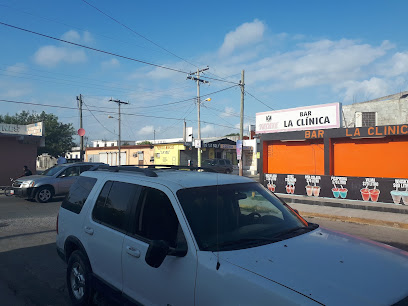
Local Phrases
-
- HelloHola
[o-la] - GoodbyeAdiós
[a-dyos] - YesSí
[see] - NoNo
[no] - Please/You're welcomePor favor/De nada
[por fa-vor/de na-da] - Thank youGracias
[gra-sias] - Excuse me/SorryPerdón/Lo siento
[per-don/lo syen-to] - How are you?¿Cómo estás?
[ko-mo es-tas] - Fine. And you?Bien. ¿Y tú?
[byen. ee too] - Do you speak English?¿Hablas inglés?
[a-blas in-gles] - I don't understandNo entiendo
[no en-tyen-do]
- HelloHola
-
- I'd like to see the menu, pleaseMe gustaría ver el menú, por favor
[me gus-ta-ria ver el me-nu, por fa-vor] - I don't eat meatNo como carne
[no ko-mo kar-ne] - Cheers!¡Salud!
[sa-lud] - I would like to pay, pleaseMe gustaría pagar, por favor
[me gus-ta-ria pa-gar, por fa-vor]
- I'd like to see the menu, pleaseMe gustaría ver el menú, por favor
-
- Help!¡Ayuda!
[ayu-da] - Go away!¡Vete!
[ve-te] - Call the Police!¡Llama a la policía!
[ya-ma a la po-li-sya] - Call a doctor!¡Llama a un doctor!
[ya-ma a un dok-tor] - I'm lostEstoy perdido
[es-toy per-di-do] - I'm illEstoy enfermo
[es-toy en-fer-mo]
- Help!¡Ayuda!
-
- I'd like to buy...Me gustaría comprar...
[me gus-ta-ria kom-prar] - I'm just lookingSólo estoy mirando
[so-lo es-toy mi-ran-do] - How much is it?¿Cuánto cuesta?
[kwan-to kwe-sta] - That's too expensiveEso es demasiado caro
[e-so es de-ma-sia-do ka-ro] - Can you lower the price?¿Puedes bajar el precio?
[pwe-des ba-har el pre-syo]
- I'd like to buy...Me gustaría comprar...
-
- What time is it?¿Qué hora es?
[ke o-ra es] - It's one o'clockEs la una
[es la u-na] - Half past (10)Las diez y media
[las dyeth ee me-dya] - MorningMañana
[ma-nya-na] - AfternoonTarde
[tar-de] - EveningNoche
[no-che] - YesterdayAyer
[a-yer] - TodayHoy
[oy] - TomorrowMañana
[ma-nya-na] - 1Uno
[u-no] - 2Dos
[dos] - 3Tres
[tres] - 4Cuatro
[kwa-tro] - 5Cinco
[sin-ko] - 6Seis
[seis] - 7Siete
[syete] - 8Ocho
[o-cho] - 9Nueve
[nwe-ve] - 10Diez
[dyeth]
- What time is it?¿Qué hora es?
-
- Where's a/the...?¿Dónde está...?
[don-de es-ta] - What's the address?¿Cuál es la dirección?
[kwal es la di-rek-syon] - Can you show me (on the map)?¿Puedes mostrarme (en el mapa)?
[pwe-des mos-trar-me (en el ma-pa)] - When's the next (bus)?¿Cuándo es el próximo (autobús)?
[kwan-do es el pro-si-mo (au-to-bus)] - A ticket (to ....)Un boleto (para ....)
[un bo-le-to (pa-ra)]
- Where's a/the...?¿Dónde está...?
History of Matamoros
-
Matamoros was officially founded on October 25, 1826, originally named Congregación de Nuestra Señora del Refugio de los Esteros Hermosos. It was later renamed to honor Mariano Matamoros, a hero in the Mexican War of Independence.
-
During the Mexican-American War (1846-1848), Matamoros played a significant role as a strategic military site. The city served as a supply point for the Mexican army and witnessed several skirmishes and military maneuvers.
-
In the mid-19th century, Matamoros experienced an economic boom due to its role in the cotton trade. The city's proximity to the Rio Grande made it a critical point for the transportation of cotton and other goods, bolstering its economy.
-
During the French Intervention in Mexico (1861-1867), Matamoros was a vital stronghold for Mexican forces. The city's resistance against the French exemplified its importance in the broader conflict to preserve Mexican sovereignty.
-
Under the rule of Porfirio Díaz (1876-1911), Matamoros underwent significant modernization efforts. Infrastructure improvements, such as the introduction of the railroad, transformed the city into a modern urban center.
-
Matamoros was a site of military activity during the Mexican Revolution (1910-1920). Revolutionary forces, including those led by Venustiano Carranza, engaged in battles throughout the region, impacting the city's socio-political landscape.
-
Over the years, Matamoros has become a cultural melting pot, influenced by its proximity to the United States and its diverse population. The city is known for its vibrant festivals, rich culinary traditions, and bustling arts scene.
-
Today, Matamoros is a thriving city with a robust economy supported by industries such as manufacturing, agriculture, and trade. Its historical landmarks, such as the Cathedral of Our Lady of Refuge and the historic theater, continue to attract visitors.
Matamoros Essentials
-
Matamoros is located in the state of Tamaulipas in northeastern Mexico, directly across the border from Brownsville, Texas. The nearest airport is General Servando Canales International Airport (MAM), which offers domestic flights. For international travelers, the nearest major airport is Brownsville/South Padre Island International Airport (BRO) in the United States. From Brownsville, you can cross the border by car, bus, or on foot via the Gateway International Bridge. Alternatively, long-distance buses from major Mexican cities such as Mexico City, Monterrey, and Guadalajara provide service to Matamoros.
-
Matamoros offers several transportation options. Taxis are widely available and relatively inexpensive. Make sure to agree on the fare before starting your journey. Public buses operate throughout the city and are an affordable way to get around. For those looking to explore beyond the city limits, car rentals are available, though driving in Mexico may require additional insurance. Biking is another option, though it is less common and may require vigilance due to traffic conditions.
-
The official currency in Matamoros is the Mexican Peso (MXN). Credit cards are accepted in most hotels, restaurants, and larger stores, but it is advisable to carry cash for smaller establishments and markets. ATMs are widely available throughout the city, but it is wise to inform your bank of your travel plans to avoid any issues with withdrawing money. Currency exchange services are available at banks and exchange bureaus.
-
While Matamoros offers many attractions, it is important to exercise caution. Some areas have higher crime rates, particularly those targeting tourists. Avoid neighborhoods such as Colonia Popular and areas near the border at night. Stick to well-lit, busy areas and avoid displaying valuable items. Use authorized taxis or ride-sharing services and avoid walking alone after dark. Always be aware of your surroundings and keep your belongings secure.
-
In case of an emergency, dial 911 for immediate assistance. Matamoros has several hospitals and clinics available for medical emergencies, including the Hospital General Dr. Alfredo Pumarejo. It is highly recommended to have travel insurance that covers medical emergencies. For minor health issues, numerous pharmacies are available throughout the city. The U.S. Consulate in Matamoros can also provide assistance to American citizens in distress.
-
Fashion: Do dress modestly and comfortably, especially during the hot summer months. Avoid wearing flashy jewelry or expensive items. Religion: Do respect local customs and traditions, especially when visiting churches and religious sites. Public Transport: Do use public transport during the day and be cautious at night. Always keep an eye on your belongings. Greetings: Do greet people with a handshake or a friendly 'Hola'. Eating & Drinking: Do try local dishes and street food, but make sure it is from a reputable vendor. Don’t drink tap water; always opt for bottled water.
-
To experience Matamoros like a local, visit the Mercado Juárez, where you can buy traditional crafts, clothing, and fresh produce. Engage with locals, as they are generally friendly and eager to share their culture. Don't miss the opportunity to try regional dishes such as cabrito (roast goat) and gorditas (stuffed corn pockets). For a unique experience, visit the Casa Cross, a historic building with a museum showcasing local history. Join in local festivities and events such as the Charro Days Fiesta, which celebrates the shared cultural heritage of Matamoros and Brownsville.
Trending Landmark in Matamoros
-
Periférico Park
-
Holiday Inn Matamoros, an IHG Hotel
-
El Laguito and Park
-
Laguito de la 3
-
Fort Casamata Museum
-
Museum of Contemporary Art of Tamaulipas
-
Rail Museum of Heroica Matamoros
-
Monumento A Rigo Tovar
-
Museo del Agrarismo Mexicano
-
El Infiernito Grill
-
Casa Cross
-
Matamoros Park
-
Rotonda De Los Matamorenses Ilustres
-
La Gran Puerta de Mexico
-
MONUMENT TO THE MASTER
Nearby Cities to Matamoros
-
Things To Do in Brownsville
-
Things To Do in South Padre Island
-
Things To Do in McAllen
-
Things To Do in Corpus Christi
-
Things To Do in Port Aransas
-
Things To Do in Laredo
-
Things To Do in Monterrey
-
Things To Do in New Braunfels
-
Things To Do in Sugar Land
-
Things To Do in Galveston
-
Things To Do in Houston
-
Things To Do in Austin
-
Things To Do in Fredericksburg
-
Things To Do in The Woodlands
-
Things To Do in College Station










